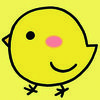将列折叠/连接/聚合到每个组中的单个逗号分隔字符串
将列折叠/连接/聚合到每个组中的单个逗号分隔字符串
我想根据两个分组变量聚合数据框中的一列,并用逗号分隔各个值。
这是一些数据:
data <- data.frame(A = c(rep(111, 3), rep(222, 3)), B = rep(1:2, 3), C = c(5:10))
data
# A B C
# 1 111 1 5
# 2 111 2 6
# 3 111 1 7
# 4 222 2 8
# 5 222 1 9
# 6 222 2 10
“A”和“B”是分组变量,“C”是我想要折叠成逗号分隔character字符串的变量。我试过了:
library(plyr)
ddply(data, .(A,B), summarise, test = list(C))
A B test
1 111 1 5, 7
2 111 2 6
3 222 1 9
4 222 2 8, 10
但是当我试图将测试列转换为character它时,它变成了这样:
ddply(data, .(A,B), summarise, test = as.character(list(C)))
# A B test
# 1 111 1 c(5, 7)
# 2 111 2 6
# 3 222 1 9
# 4 222 2 c(8, 10)
如何保留character格式并用逗号分隔?例如,第1行应该只是"5,7",而不是c(5,7)。
 慕后森
慕后森浏览 835回答 3
3回答
-

隔江千里
这里有一些选项使用toString,一个很好的实用程序函数,用逗号连接字符串。如果你不希望逗号,你可以使用paste()与collapse参数来代替。data.table# alternative using data.tablelibrary(data.table)as.data.table(data)[, toString(C), by = list(A, B)]aggregate这不使用包:# alternative using aggregate from the stats package in the core of Raggregate(C ~., data, toString)sqldf以下是group_concat使用sqldf包使用SQL函数的替代方法:library(sqldf)sqldf("select A, B, group_concat(C) C from data group by A, B", method = "raw")dplyr甲dplyr替代:library(dplyr)data %>% group_by(A, B) %>% summarise(test = toString(C)) %>% ungroup()plyr# plyrlibrary(plyr)ddply(data, .(A,B), summarize, C = toString(C)) -

Helenr
改变放置位置as.character:> out <- ddply(data, .(A, B), summarise, test = list(as.character(C)))> str(out)'data.frame': 4 obs. of 3 variables: $ A : num 111 111 222 222 $ B : int 1 2 1 2 $ test:List of 4 ..$ : chr "5" "7" ..$ : chr "6" ..$ : chr "9" ..$ : chr "8" "10"> out A B test1 111 1 5, 72 111 2 63 222 1 94 222 2 8, 10但请注意,每个项目实际上仍然是一个单独的字符,而不是单个字符串。也就是说,这不是一个看起来像“5,7”的实际字符串,而是两个字符“5”和“7”,R在它们之间用逗号显示。与以下内容比较:> out2 <- ddply(data, .(A, B), summarise, test = paste(C, collapse = ", "))> str(out2)'data.frame': 4 obs. of 3 variables: $ A : num 111 111 222 222 $ B : int 1 2 1 2 $ test: chr "5, 7" "6" "9" "8, 10"> out A B test1 111 1 5, 72 111 2 63 222 1 94 222 2 8, 10基础R中的可比解决方案当然是aggregate:> A1 <- aggregate(C ~ A + B, data, function(x) c(as.character(x)))> str(A1)'data.frame': 4 obs. of 3 variables: $ A: num 111 222 111 222 $ B: int 1 1 2 2 $ C:List of 4 ..$ 0: chr "5" "7" ..$ 1: chr "9" ..$ 2: chr "6" ..$ 3: chr "8" "10"> A2 <- aggregate(C ~ A + B, data, paste, collapse = ", ")> str(A2)'data.frame': 4 obs. of 3 variables: $ A: num 111 222 111 222 $ B: int 1 1 2 2 $ C: chr "5, 7" "9" "6" "8, 10" -

森林海
这是stringr/ tidyverse解决方案:library(tidyverse)library(stringr)data <- data.frame(A = c(rep(111, 3), rep(222, 3)), B = rep(1:2, 3), C = c(5:10))data %>% group_by(A, B) %>% summarize(text = str_c(C, collapse = ", "))# A tibble: 4 x 3# Groups: A [2] A B test <dbl> <int> <chr>1 111 1 5, 7 2 111 2 6 3 222 1 9 4 222 2 8, 10
 随时随地看视频慕课网APP
随时随地看视频慕课网APP



 R语言
R语言